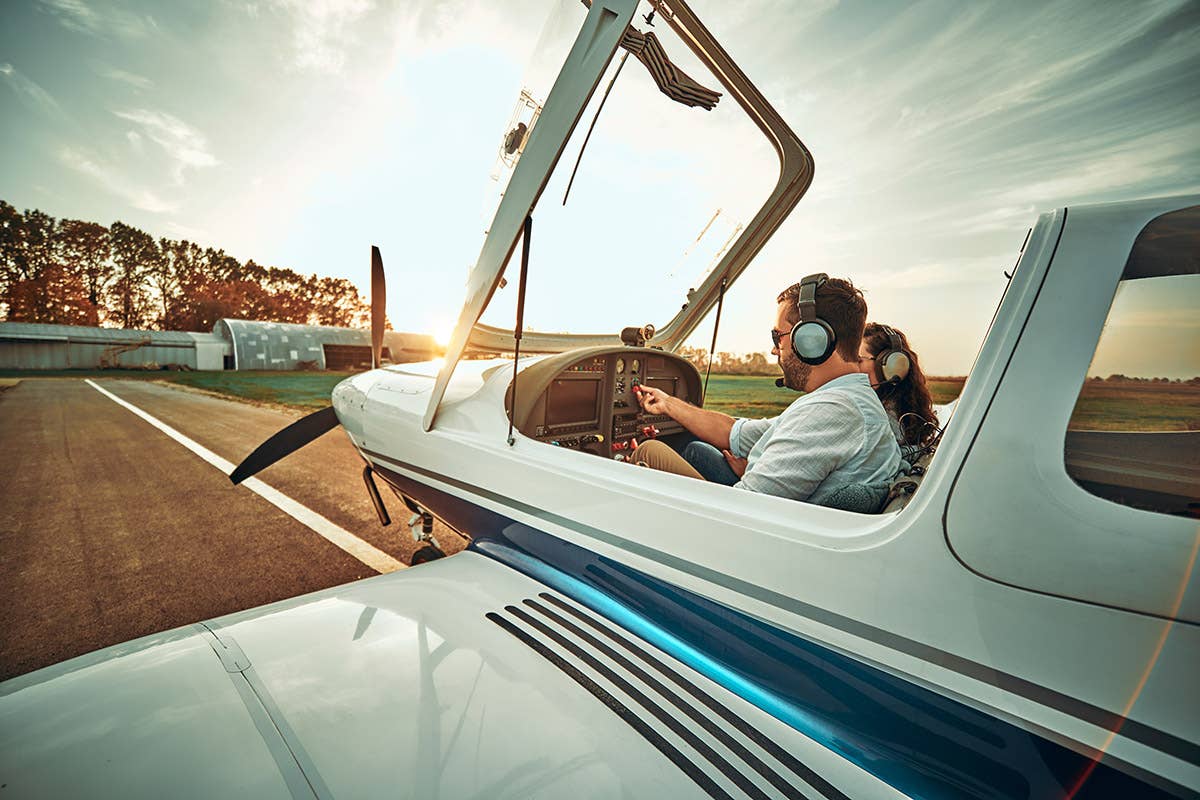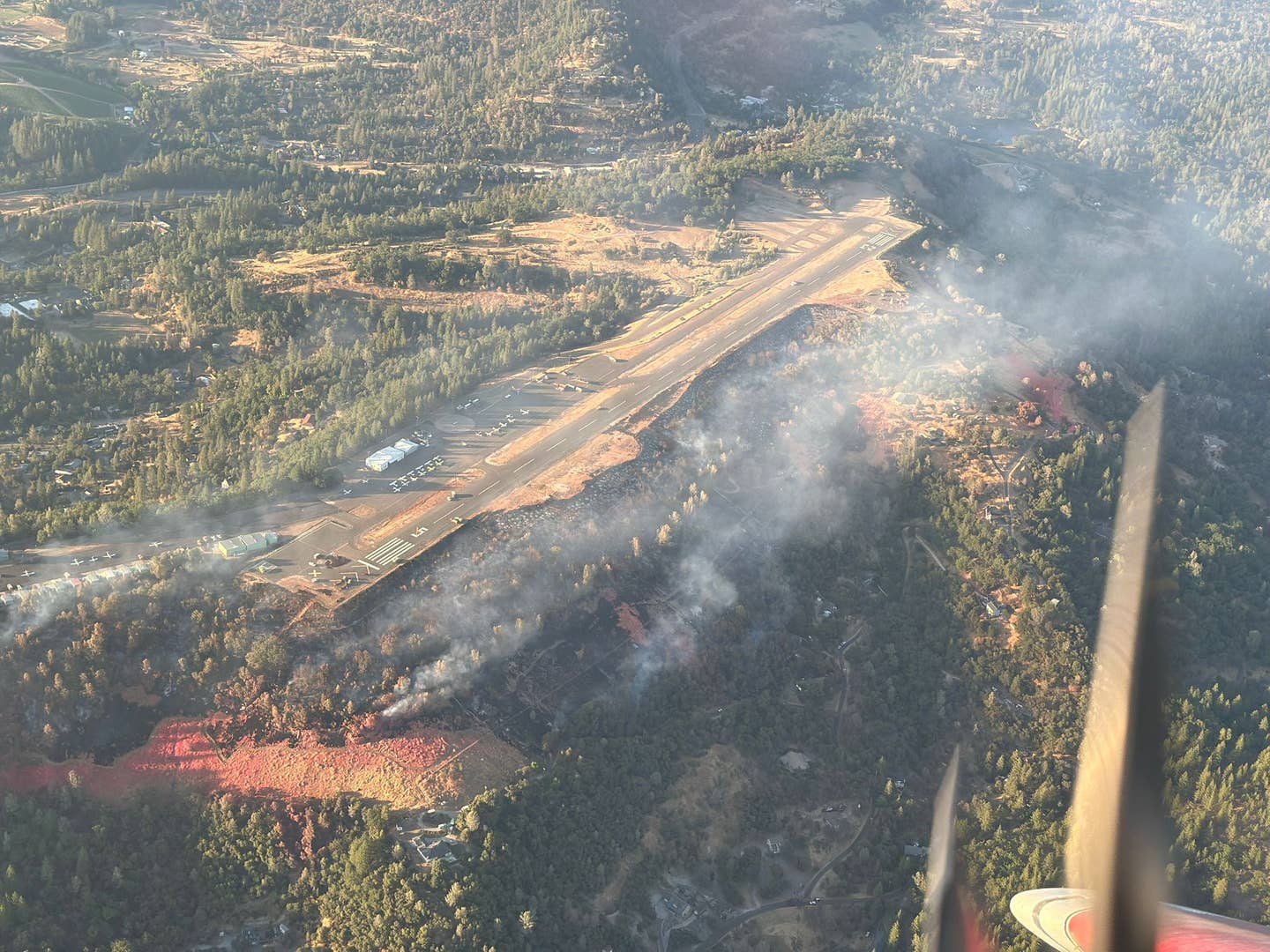Thomas Jefferson Certainly Left His Mark on Charlottesville
This Virginia city is packed with history, culture, and natural beauty.

No trip to Charlottesville, Virginia, would be complete without a stop at Monticello, the home of Thomas Jefferson. [iStock]
Located in central Virginia near the scenic Blue Ridge Mountains, Charlottesville is packed with history, culture, natural beauty, and long lists of activities that guarantee you will never run out of interesting things to do during a visit.
The town is known as a hub of colonial American history in general and for its connections to founding father Thomas Jefferson in particular and has been a popular destination since long before the first powered flight.
If you're not already a subscriber, what are you waiting for? Subscribe today to get the issue as soon as it is released in either Print or Digital formats.
Subscribe NowToday, though, it is also among the most inviting places for general aviation pilots , thanks in part to Charlottesville-Albemarle Airport (KCHO), a towered field with a spacious terminal, scheduled airline and charter flights , and a range of services for private pilots.
Getting There
Flying into airports near the special flight rules area (SFRA), the roughly 30 nm radius encircling Reagan Washington National Airport (KDCA) and Washington, D.C., requires special consideration. Unless my destination is inside that restricted area, I simply avoid it. Charlottesville is outside the SFRA to the southwest but close enough for potential discomfort.
The direct route from my home airport at Sussex, New Jersey (KFWN), grazes the SFRA and takes me through the Class B airspace of Dulles International Airport (KIAD). Rather than pick my way along the restricted perimeter and under the Class B shelf, I added Winchester Regional (KOKV) as a waypoint that would keep me clear of those sensitive areas. While I am fond of F-16s, I worry incessantly about the prospect of being intercepted by one.
The Airport
Long before today’s KCHO opened, Charlottesville was a magnet for some of the earliest aviators. In 1912, Beckwith Havens, a young demonstration pilot who worked for the Curtiss Aeroplane Company, made two 12-minute flights in a Curtiss Pusher from the University of Virginia’s Lambeth Field during the college’s Easter celebration. According to historical records, spectators paid 50 cents for admission to the field. Havens went to work for Glenn Curtiss in 1910 as a salesman, but Curtiss soon taught him to fly.
An airport called Wood Field that included a flying school opened in town in 1929 but closed within a few years as the Great Depression took hold. In 1951 town officials decided to begin the project that would become Charlottesville-Albemarle Airport.
Unlike several midsize airports we have visited, KCHO lacks a direct connection with aviation’s golden age. The field did not get its start during the 1920s as a grass strip where airmail pilots landed to refuel or for emergency assistance, nor did it host Ford Trimotors and Douglas DC-3s in the 1930s as scheduled airline operations began to expand. While many of today’s airports opened at or near the beginning of World War II as training centers for military pilots, Charlottesville was built after the war, opening in 1954. Still, KCHO’s development provides an informative reflection of how airline travel evolved.
Although the Jet Age had begun by the time of the airport’s completion, and the program handed out during its official opening ceremony included the stylized image of a swept-wing jet on its cover, the airport—and its relatively short runway—were designed around the piston-engine airliners that defined the period.
The airport began operations the same year British aviation authorities grounded the fleet of new de Havilland Comet jet airliners following three fatal accidents involving in-flight breakups. The Comet prototype first flew in 1949, and the production version entered service with British Overseas Airways Corp. in 1952.
The aircraft was a watershed design whose turbine power and pressurized cabin allowed it to fly at higher altitudes than were typical for piston airliners and cruise at speeds previously unheard of for passenger airliners. It promised to solidify Britain’s position as leaders in aviation technology. The accidents, however, slowed the acceptance of jet propulsion for commercial aircraft. At most airports, including KCHO, propeller-driven aircraft such as Douglas DC-3s and DC-6s, prewar and wartime designs respectively, carried out the airline flights.
Jets did not arrive at Charlottesville until 1969, when Piedmont Airlines began operating Boeing 727s there, around the same time the runway was extended to 6,000 feet. In the 1980s, the airport added another 800 feet to the runway to support the many regional jets that operate from KCHO. Today, the airport serves more than 500,000 passengers annually.
Things to Do
There is a lot going on in Charlottesville, with numerous historical sites, tours, galleries, shops, and restaurants vying for your attention. The list of possibilities might prove too long for a single visit, so it is best to plan carefully and focus on the attractions that interest you most.
Here are a few suggestions to get you started:
Monticello
Most people would say you cannot visit without spending time at Monticello, Thomas Jefferson’s hilltop home. The house and grounds offer a window into the mind and personality of the country’s third president, lead writer of the Declaration of Independence, and founder of the University of Virginia. Jefferson designed the house and the property’s many outbuildings, and the home’s interior details and grounds say much about his tastes and lifestyle. A number of tours are available at Monticello and worthwhile for anyone seeking a better understanding of the nation’s beginnings.
Highland
While you are visiting Monticello, you should take advantage of the adjacent location of Highland, former home to fifth president, James Monroe. Visitors will spot several contrasts and similarities in the two homes, but for many people, Highland will seem like a more realistic place to live.
During tours of the house you can learn more about the wide range of people who visited during Monroe’s decades-long political career and become more familiar with their individual stories. You can also come away with a clearer sense of history through Monroe’s point of view.
University of Virginia
When Jefferson founded the public university in 1819, it was uncharted academic territory. The idea of a public institution for the advancement of knowledge seemed to many like a reach.
Today, UVA is a well-established, must-see in Charlottesville. I recommend a tour, so you will not miss attractions such as author Edgar Allan Poe’s dormitory room from the short time he was a student at UVA. A group called the Raven Society keeps the room as it would have looked during Poe’s time. You can also see Lambeth Field, where Havens performed air shows more than 100 years ago.
Jefferson had an architectural affection for domed buildings—including Monticello—and the Rotunda on the UVA campus is one that is open to visitors and worth a visit. Jefferson also designed the serpentine brick walls that can be seen lining gardens on campus, many of which are open to visitors.
The Memorial to Enslaved Laborers is a more recent addition to campus that serves as a tribute to the people who built the university.
The Mall
The Charlottesville Mall is not a “big box” indoor shopping center but a picturesque downtown pedestrian corridor lined with more than 120 shops and 30 restaurants. Highlights include clothing stores, independent bookstores, consignment shops and more.
Numerous outdoor cafes give the mall the feel of a European village square. Visiting at night, when the mall’s unique overhead lights are on, adds to the unique atmosphere.
Charlottesville-Albermarle Airport (KCHO)
Location: Charlottesville, Virginia
Airport elevation: 640 feet msl
Airspace: Class D
Airport hours: Continuous. Tower operates 0600-2300
Runways: 03/21
Lighted: Pilot-controlled PAPI
Pattern altitude: 1,640 msl
This column first appeared in the May 2024/Issue 948 of FLYING’s print edition.

Subscribe to Our Newsletter
Get the latest FLYING stories delivered directly to your inbox







